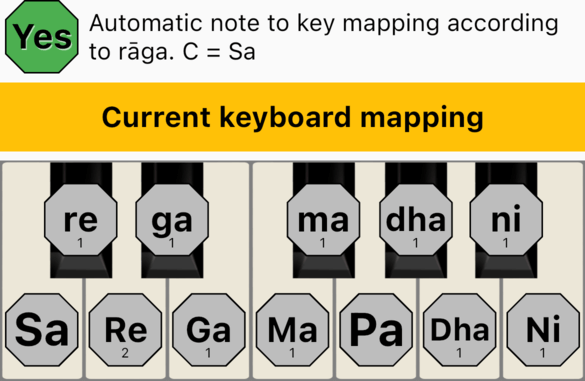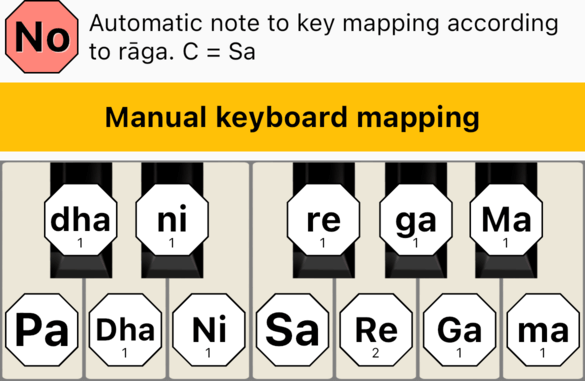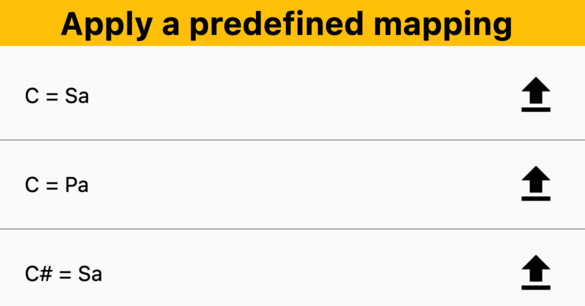What is a mapping?
The MIDI mapping defines the correspondence of shrutis or notes and the device keys. With it, you decide which note will be played on each key of your MIDI keyboard 🎹 :
- MIDI Keyboard key <=> Note to play when pressed.
For piano like keyboards, you have to select 12 notes, to fill an octave. Then, it will be repeated automatically over all the octaves of the MIDI keyboard. For special footboards or keyboards, you have to select a note for every button.
In the studio, the MIDI mapping is accessible with the button ![]()
Imagine your keyboard
There is no requirements to have a strictly increasing scale. You can have S R r G g: komal notes on white keys, but shuddh notes on black keys.
You can also have several keys playing the same note. For example, for Bhupali, you can map S R R G G … no keys for komal notes at all !
You can start the octave by putting Sa on any key of the keyboard.
It’s up to you.
Automatic transposition
⚠️ If you map Sa on the C key, the C key will play the base note you selected for Sa, which may not be C. It’s an automatic transposition.
For example, if with your Sitar, Sa is tuned to C#, then the MIDI keyboard will play Sa = C# when you press the C key.
Automatic note to key mapping
If automatic is on, then iTabla Pandit Studio will map itself the notes of the scale (swaras of the rāga) to the MIDI keys, according to a predefined mapping:

Manual note to key mapping
If you wish to configure yourself your keyboard MIDI keys according to the selected musical scale/rāga, you have to select for each key which note to play.
You can place Sa on the key of your choice:

At the moment, our software can map:
- Any MIDI keyboard (piano style or whatever)
- Logelloop footboard, which is a footboard with 12 buttons (+1 for octave change).
Predefined set of mappings
You may apply a predefined mapping to quickly create your own mapping:

Select a mapping and apply it with upload.
Save your mapping
When you store the current mapping with the button save_alt, an association will be saved:
- Current rāga (musical scale),
- Current MIDI device
- Current mapping
All your mappings will be saved in a MIDI mapping set, stored in file on your device. Then, later, when you change the rāga/musical scale, the appropriate MIDI mapping will be search in the mapping set. It it is found, it will be applied immediately, otherwise, the current mapping will stay configured.
Note: they are not shared with settings, it’s an independent set of data, related to your MIDI devices.